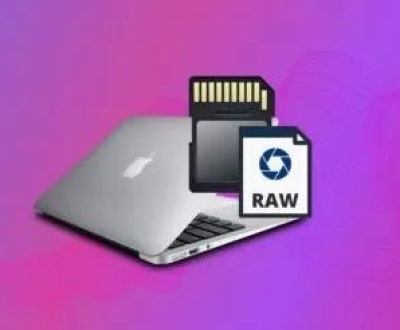The error message “PDF is of invalid format” typically occurs when a PDF file cannot be opened due to corruption, an incomplete download, or a mismatch between the file format and the software being used to view it. PDFs are designed to be universal, but there are still a variety of issues that can prevent them from opening correctly.
A PDF file can become corrupt for a variety of reasons:
Partial or Failed Downloads: If a PDF is only partially downloaded or if the download process was interrupted, the file may not open properly, resulting in an invalid format error.

Corrupted Storage Media: If the storage media (like a hard drive, USB flash drive, or SD card) where the PDF is stored has experienced corruption, this can affect the integrity of the file.
File Transfer Issues: If a file is transferred between different devices or operating systems, there may be compatibility issues that lead to corruption.
Outdated or Incompatible Software: Using an outdated PDF reader or one that doesn’t support certain file features can cause issues when trying to open certain PDFs.
Step 1: Check for File Corruption
One of the primary causes of the “PDF is of invalid format” error is file corruption. If the PDF file was corrupted during download, transfer, or storage, the file will no longer be recognized as a valid PDF file. Here’s how you can check for file corruption:
Inspect File Size: Compare the file size of the problematic PDF with the expected size. If the file is much smaller than it should be, it’s likely that the file was only partially downloaded or corrupted during transfer.
Test on Different Devices or PDF Readers: If you’re unable to open the file on one device or PDF reader, try opening it on a different device or using another PDF reader (like Adobe Acrobat, Foxit Reader, or Google Chrome). This will help you determine if the issue is specific to the software you’re using.
Step 2: Try to Open the PDF in a Different PDF Reader
Sometimes, a PDF may not open in one PDF reader due to compatibility issues. Here are some alternative readers you can try:
Adobe Acrobat Reader: The most widely used PDF reader, which ensures compatibility with most PDFs. Download the latest version of Adobe Acrobat Reader to ensure the best chance of opening your PDF.
Google Chrome or Firefox: Both of these browsers come with built-in PDF readers, which are sometimes better at opening problematic PDFs. Simply drag and drop the file into a browser window to see if it opens correctly.
Foxit Reader: Foxit is another popular PDF reader that may handle certain types of PDFs better than others.
Step 3: Repairing the PDF File
If you suspect the file is corrupt, you can try to repair the PDF using specialized tools. Several PDF repair tools are available online, but it’s important to choose a reliable one. Some of the popular ones include:
PDF2Go: This online tool offers a “Repair PDF” option that can fix broken PDF files. Simply upload the corrupt file, and PDF2Go will attempt to repair it.
Stellar Repair for PDF: A paid solution that can help repair corrupted PDF files. This software is designed to fix a wide range of PDF corruption issues, including those caused by bad storage media or improper transfers.
Kernel for PDF Repair: This is another paid tool that claims to recover damaged PDF files without losing any content, including text, images, and formatting.
Step 4: Recovering PDF Files Using Backup
If the PDF file is irreparably corrupted, but it’s crucial for you to recover the contents, check if you have a backup. Many people use cloud storage services such as Google Drive, Dropbox, or OneDrive to back up their important files. If your PDF is stored in the cloud, try accessing the backup version of the file.
Cloud Backup: Services like Google Drive and Dropbox often keep previous versions of your files. If your PDF file is backed up to the cloud, you can access an earlier version that may not be corrupted.
External Backups: If you keep external backups on hard drives or network-attached storage (NAS), now is the time to recover the file from these backups.
Step 5: Convert the PDF File to Another Format
If you’re unable to repair the PDF file or open it with another reader, you might try converting the file to another format to recover its contents. Several online tools allow you to convert a PDF into a Word document, image, or even HTML, which might make it easier to extract text or images from the document.
Online PDF to Word Conversion Tools: Websites like Smallpdf or ILovePDF allow you to upload a PDF and convert it to an editable Word document.
Image Extraction: If the PDF contains important images, you can convert the PDF to images using online converters like PDF to JPG.
Use Adobe Acrobat: If you have Adobe Acrobat Pro, you can try to open the file and export the contents to other formats (like .txt or .docx), which might help you salvage the data.
Step 6: Restore the File from a Different Source
If the file was originally downloaded or transferred from another source, check to see if you can retrieve the file again. Perhaps the file wasn’t properly downloaded or transferred the first time, and you can simply get a fresh copy.
Check Your Email: If the PDF was sent to you as an email attachment, ask the sender to resend the file or check if you can download a new copy.
Download Again: If you obtained the PDF from a website or online service, try to download the file again, ensuring that the download completes successfully.
Step 7: Use a Hex Editor to Inspect the File
If you’re familiar with working at a technical level, you can use a hex editor to open the PDF and inspect the underlying code. This method is for advanced users, as it requires you to understand the structure of PDF files. In a hex editor, you might see the “%PDF” signature at the start of the file. If this signature is missing or corrupted, it’s another sign that the file is damaged.
Step 8: Prevent Future PDF Corruption
To avoid facing the “PDF is of invalid format” issue in the future, follow these preventative measures:
Use Reliable Download Sources: Always download PDF files from trusted sources, and make sure your internet connection is stable during the download process.
Backup Important Files Regularly: Regularly back up important files to cloud storage or external drives to protect against corruption and loss.
Use Updated Software: Keep your PDF reader software up to date to ensure compatibility with the latest PDF standards and bug fixes.
Perform Regular Disk Checks: If you frequently encounter file corruption, it may be worth performing regular checks on your hard drive or external storage to ensure it’s not failing.
About us and this blog
Panda Assistant is built on the latest data recovery algorithms, ensuring that no file is too damaged, too lost, or too corrupted to be recovered.
Request a free quote
We believe that data recovery shouldn’t be a daunting task. That’s why we’ve designed Panda Assistant to be as easy to use as it is powerful. With a few clicks, you can initiate a scan, preview recoverable files, and restore your data all within a matter of minutes.
Subscribe to our newsletter!
More from our blog
See all postsRecent Posts
- Retrieve deleted videos from sd card 2025-04-25
- How to retrieve damaged sd card? 2025-04-25
- Retrieve photos from sd card 2025-04-25

 Try lt Free
Try lt Free Recovery success rate of up to
Recovery success rate of up to









